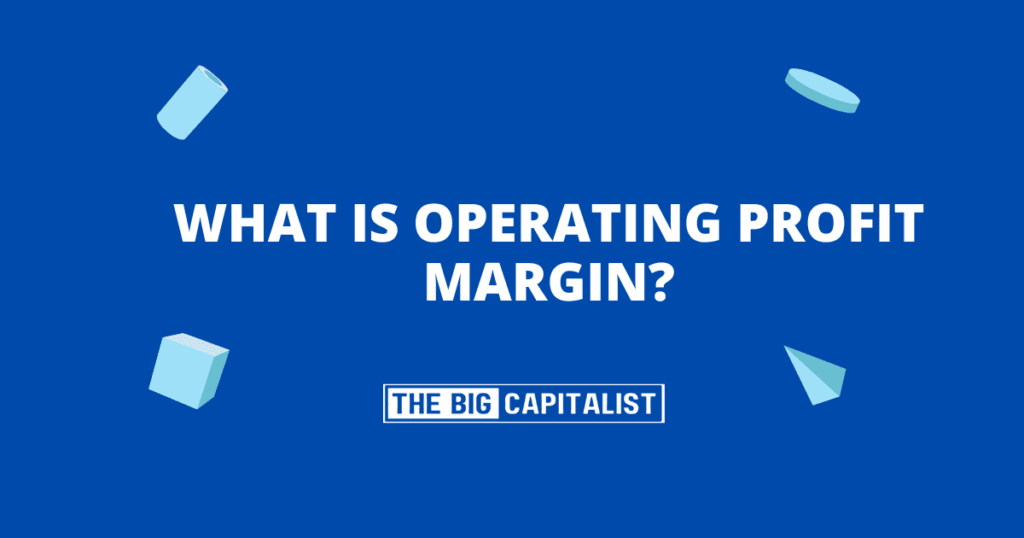This ratio provides insights into a company’s core profitability. It’s a measure of how well a business can turn revenue into profit after accounting for the costs of production. The Operating Profit Margin is crucial for understanding this aspect of financial health.
But how is it calculated? And what does it really tell us about a business?
This guide will delve into the Operating Profit Margin. We’ll explore its formula, how to calculate it, and its significance in assessing a company’s financial health.
We’ll also look at its application in different industries, including refineries. By the end, you’ll have a comprehensive understanding of this important financial ratio.
So, whether you’re a business owner, an investor, a finance student, or just curious, this guide is for you. Let’s dive in.
What is Operating Profit Margin?
The Operating Profit Margin is a financial metric that reflects a company’s core profitability. It measures the percentage of revenue that remains after covering operating expenses.
Unlike net profit margin, which accounts for all expenses, operating profit margin focuses solely on operational costs. This distinction makes it especially useful for evaluating a company’s operational efficiency and cost management.
Calculating this margin involves dividing the operating profit by total revenue. The result is expressed as a percentage, indicating how much profit is made for each dollar of sales.
A higher operating profit margin suggests better profitability and efficient management of costs. It indicates a company’s ability to generate profit from its operations. Conversely, a low margin might signal inefficiency or competitive pressures impacting profitability.
Therefore, the operating profit margin serves as a key indicator of a company’s financial health. It assists stakeholders in understanding the effectiveness of management strategies and operational performance without the noise of external financial factors.
Why Operating Profit Margin Matters
Operating Profit Margin is crucial because it shows how efficiently a company converts sales into profits. It reveals the effectiveness of managing day-to-day operations.
Investors and analysts pay close attention to this margin. A healthy operating profit margin is often a sign of strong management and a competitive edge in the market.
For companies, this metric is not just a measure of past performance. It also provides insights into future profitability. A stable or growing margin can indicate potential for expansion or increased investor returns.
Comparing operating profit margins between companies in the same industry helps in benchmarking performance. It highlights which firms manage their operations better, thus potentially guiding investment choices.
In corporate strategies, understanding this margin is essential for identifying cost-saving opportunities. Businesses may focus on reducing overhead or improving efficiency to enhance their margins. Hence, it is a vital component in both strategic planning and performance evaluation.
How to Calculate Operating Profit Margin: A Step-by-Step Guide
Calculating Operating Profit Margin is a systematic process. It involves understanding financial terms and using them correctly.
First, gather the company’s financial statements. Focus on the income statement, where most required figures are located.
Identify the revenue figure on the income statement. This is the total amount earned from sales activities.
Next, find the operating expenses. These are the costs necessary to run daily business operations, excluding interest and taxes.
Subtract operating expenses from the gross profit. The result is the operating profit, also known as operating income.
Ensure that all non-operating items, such as interest and taxes, are not included in the operating profit. Keep the focus on core operations.
Once you have the operating profit, it’s time to apply the formula:
Calculating Operating Profit Margin
Operating Profit Margin measures how much profit a company makes from its regular business operations, before taking into account interest and taxes. It shows what percentage of total revenue is left over after subtracting operating expenses (like wages, rent, and utilities).
Operating Profit
= Revenue - Operating Expenses
Operating Profit Margin
= (Operating Profit / Revenue) × 100%
Example Calculation
Suppose a company has total revenue of $1,000,000, and its operating expenses (salaries, rent, utilities, etc.)
total $800,000.
Operating Profit
= $1,000,000
- $800,000
= $200,000
Operating Profit Margin
= ($200,000 / $1,000,000) × 100%
= 20%
This means the company keeps 20% of its revenue as operating profit. A higher margin generally indicates better cost management and profitability from core operations.
Divide the operating profit by the revenue. This division reflects the proportion of revenue transformed into profit.
Multiply the result by 100. This converts the figure into a percentage, making it easier to interpret.
This percentage can be compared over time. It aids in assessing whether operational efficiency has improved or declined.
Repeat the calculation for different periods. This trend analysis identifies patterns in profitability and operational effectiveness.
It’s crucial to use consistent methods of calculation. This consistency ensures that comparisons over time are accurate and meaningful.
Analyzing this margin in the context of the industry offers more insights. It shows how well the company performs against peers.
Be aware that external factors can influence results. Market conditions or extraordinary expenses can distort the Operating Profit Margin.
By calculating this margin, companies can spot areas needing improvement. It guides strategic decisions to enhance profitability.
This detailed calculation helps in understanding the company’s financial health better. It informs investors and management alike about operational success.
Operating Profit Margin in Different Industries
Operating Profit Margin varies across industries. Each industry faces unique challenges and cost structures.
For example, technology companies often exhibit higher margins. They typically have lower variable costs compared to revenue.
Conversely, the retail industry may display lower margins. High competition and significant fixed costs impact profitability significantly.
Manufacturing industries have varying margins. They depend heavily on scale, efficiency, and cost management practices.
Recognizing these differences is critical. It helps in setting realistic benchmarks and expectations for profitability across sectors.
Operating Profit Margin in Refineries
Operating Profit Margin in refineries is particularly notable. This industry’s margin is influenced by commodity prices and regulatory costs.
Refineries operate within a narrow margin. Fluctuations in crude oil prices can drastically affect profitability.
Moreover, environmental regulations add to operational expenses. These costs can suppress the Operating Profit Margin further.
Operational efficiency is vital for refineries. Enhanced technologies and processes can improve profit margins significantly.
Understanding these dynamics is crucial for investors. It aids in evaluating the potential and risks specific to the refining industry.
Real-World Examples: Operating Profit Margin Analysis
Operating Profit Margin is a crucial indicator in real-world financial analysis. It shows a company’s capacity to turn sales into profits before taxes and interest.
Let’s consider a tech giant like Apple. With high margins, this company demonstrates strong profitability from its innovative products. Apple’s strategic pricing and efficient operations significantly boost its Operating Profit Margin.
In contrast, a traditional retail company such as Walmart may display lower margins. This results from intense price competition and substantial fixed costs. Its business model prioritizes volume over margin.
Manufacturing firms face different challenges. For example, a car manufacturer like Ford needs to manage production costs effectively. Scaling operations helps improve margins but requires significant capital investments.
The airline industry, known for its cyclical nature, is another example. Airlines like Delta work under tight margins. Fuel prices and labor costs heavily influence their financial performance.
Food and beverage companies such as Coca-Cola display varied margins. Brand strength allows premium pricing, enhancing Operating Profit Margin despite high marketing costs.
Banking institutions also provide insightful examples. A bank’s margin reflects its efficiency in handling loans and deposits. Interest rate fluctuations significantly impact overall profitability.
Automotive parts suppliers exhibit interesting margin dynamics. Companies like Bosch balance material costs with innovation to maintain decent profitability.
Online retail businesses such as Amazon operate under distinct economic models. While margins were once razor-thin, technological advances and scale improvements have boosted profitability.
Healthcare firms like Johnson & Johnson show the importance of innovation. New product lines can drive margins higher, despite heavy research and development investments.
These examples illustrate the diverse factors influencing Operating Profit Margin across industries. Each industry’s unique characteristics shape its approach to profitability.
The Impact of Costs on Operating Profit Margin
Costs play a vital role in shaping a company’s Operating Profit Margin. Every business must manage both fixed and variable costs effectively.
Fixed costs, like rent and salaries, remain constant regardless of output. Companies with high fixed costs may face lower margins during downturns.
Variable costs, such as raw materials and shipping, fluctuate with production levels. Effective cost management can significantly enhance Operating Profit Margin.
Operational efficiency is another key factor. Streamlining production processes reduces waste, which can significantly lift margins.
Cost control isn’t just about reducing expenses. It’s about allocating resources strategically to maintain quality and improve profitability.
Understanding the cost dynamics is essential for boosting a company’s financial performance. Informed decisions on managing these costs can improve operational efficiency and enhance Operating Profit Margin. Good cost management can lead to lasting profits. This makes it a key focus for businesses that want to succeed in competitive markets.
Comparing Operating Profit Margin Across Companies and Industries
Operating Profit Margin is a key metric for comparing companies and industries. It reveals how efficiently a business operates compared to peers.
Different industries have varying standard margins. Tech companies may have higher margins than retail businesses due to different cost structures.
Within the same industry, a higher margin suggests better control over costs and pricing strategies. It indicates a competitive edge and efficient management.
Industry norms help set realistic expectations. A margin that appears low in one industry might be impressive in another.
Thus, investors and analysts use Operating Profit Margin to compare businesses effectively. This metric helps in making informed decisions about potential investments and understanding the industry’s financial landscape. By analyzing these margins, one can gauge the relative efficiency and profitability of companies, even in diverse sectors. These comparisons often guide strategic decisions at both investor and managerial levels.
Limitations of Operating Profit Margin as a Metric
Operating Profit Margin, while valuable, has its limitations. One major drawback is its focus solely on operational efficiency, ignoring other financial aspects.
It doesn’t consider interest, taxes, or one-off events that can significantly affect overall profitability. This narrow view can lead to misleading conclusions.
The margin might appear healthy due to temporary cost-cutting measures, masking long-term issues. It’s crucial to examine it alongside other financial ratios.
Different accounting practices can also skew results. Companies using creative accounting might inflate or deflate their margins.
Thus, relying solely on Operating Profit Margin can be risky. It’s best used as part of a broader analysis. Investors should combine it with other metrics for a more comprehensive understanding. Doing so provides a clearer picture of a company’s true financial health, avoiding the pitfalls of a limited perspective. This ensures more informed decisions and accurate assessments.
Strategies for Improving Operating Profit Margin
Improving Operating Profit Margin requires focused strategies. One effective approach is to enhance revenue streams. Explore new markets or refine product lines to boost sales.
Cost control is another crucial strategy. Reducing variable costs, such as materials and labor, can enhance margins. Look for waste reduction opportunities.
Streamlining operations leads to efficiency. Implementing technology can automate processes, decreasing errors and labor costs. This increases profit margins without sacrificing quality.
Pricing strategies impact margins too. Regularly review pricing models to ensure competitiveness. Adjust prices to reflect value offerings appropriately.
Supplier negotiations can affect costs. Build strong relationships to secure favorable terms or discounts. This reduces the cost of goods sold.
Improving inventory management helps in controlling costs. Overproduction or excess inventory can lead to wastage and increased expenses.
Encourage a culture of continuous improvement among employees. Engaged staff often identify and act on efficiency opportunities.
Monitoring and benchmarking against industry standards can guide improvements. Identifying areas of lagging performance is vital for targeted action.
Invest in employee training to boost productivity. Skilled workers contribute more effectively, enhancing operational outcomes.
Finally, focus on customer satisfaction. Loyal customers can lead to repeat business, helping maintain and grow profit margins.
Conclusion: The Role of Operating Profit Margin in Business Success
Operating Profit Margin is crucial for assessing a company’s health. It reveals how efficiently a company operates relative to its revenue. A higher margin often indicates effective cost management and operational proficiency.
For investors and analysts, it serves as a valuable indicator. It helps in understanding a company’s profitability potential within its industry. This can be a deciding factor for investment decisions.
Businesses must monitor and aim to improve their margins continually. This metric plays a pivotal role in strategic planning and growth. Enhancing Operating Profit Margin is central to achieving sustainable business success.
Certainly! Here’s the revised FAQ section without the lines between entries:
Frequently Asked Questions (FAQ)
1. What does it mean when a company has a high profit margin from its core operations?
A high margin from operations typically indicates that the company efficiently manages its costs and generates solid returns from its main business activities. It often reflects strong pricing strategies, good cost control, and effective management.
2. How do you calculate the profitability of a company’s operations?
To assess this, subtract operating expenses from total revenue to find the operating income. Then divide that figure by the revenue and multiply by 100 to get the percentage. This calculation shows how much of each dollar earned is retained before interest and taxes.
3. Why is it important to evaluate earnings before interest and taxes?
Looking at profits before financing and tax costs provides a clear view of a company’s true operational efficiency. It allows comparisons between companies regardless of capital structure or tax strategies.
4. Do margins vary across different industries?
Yes, margins differ significantly by industry. Tech firms may enjoy wider profitability due to lower variable costs, while sectors like retail or transportation tend to operate on thinner spreads because of intense competition or higher fixed expenses.
5. How can a business improve its efficiency in turning sales into profit?
A company can boost efficiency by cutting unnecessary expenses, streamlining processes, adjusting pricing strategies, adopting automation, and improving supply chain negotiations. These efforts can lead to more income retained from each sale.
















